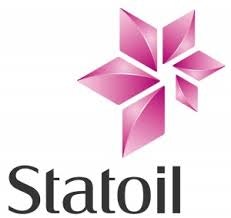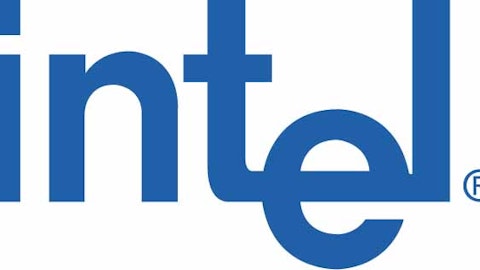While I was in Stavanger, Norway during a recent vacation, Statoil ASA (ADR) (NYSE:STO), the Norwegian-controlled oil company, was making news, selling some of its North Sea interests for cash to invest elsewhere.
The shares had fallen in value recently, so while those who like Exxon Mobil Corporation (NYSE:XOM) have broken even over the last year, investors in Statoil ASA (ADR) (NYSE:STO) are out 12.7% on their stake.
So, should you buy your oil stocks in Norway or in Texas? Let’s take a look.
How Statoil stacks up
One point that was made to me repeatedly as I traveled Norway is that Statoil ASA (ADR) (NYSE:STO) is the country’s patrimony, that everyone knows it is losing steam in the North Sea, and that it must diversify in order to maintain the high standard of income the country’s 5.5 million citizens have become accustomed to.

The risk-reward here is different from what you would find in America. The fields are unproven, they are often in dangerous waters, but they can be much bigger than an American shale play.
While many analysts have focused on Statoil ASA (ADR) (NYSE:STO)’s interests in the Bakken and Marcellus plays, these seem to be aimed at exploring that technology cheaply, for use down the line, rather than for current growth. It wants major growth in reserves to power the country for the decades after the North Sea play is done, currently estimated at 2030.
The man behind the strategy is Helge Lund, a 50-year old trained at McKinsey who was briefly an advisor to the country’s government before getting into the oil business in 2002. He brings in about $2.5 million/year, a pittance by American standards, but he seems in little danger of being poached by an American rival.
Statoil by the Numbers
This means that Statoil ASA (ADR) (NYSE:STO) is a more aggressive exploration play than you would imagine, and that it’s willing to spend big in order to bet big on the future.
This is a relatively recent direction, reflected in the numbers, which mainly show declining revenues, and declining profits. The balance sheet, however, remains strong, with debt of roughly $25 billion matched against assets of $147 billion. (The company reports results in Norwegian kroner, which trade at roughly 5.5 to the dollar.) Operating cash flow is currently averaging about $5.5 billion each quarter.
Investor skepticism about Statoil ASA (ADR) (NYSE:STO)’s business model and aims has turned the stock into a relative bargain, with a yield of 5.12% and a price/earnings multiple of just over 11.
Other Ways to Play
Generally, Statoil ASA (ADR) (NYSE:STO) is being dismissed by American investors because they prefer the way American oil companies have been going after profits, separating growth from yield.
The way it works is that an exploration company will drill and develop a field, then place that asset in a master limited partnership, or MLP, focused on maximizing yield. This means the exploration companies are speculative, investors like the action, while the yield goes through an MLP for maximum tax advantages and income.
You can see this at work with Linn Energy LLC (NASDAQ:LINE), which is yielding a fat 11.97%. The sustainability of that yield depends on its buying more producing assets to maintain it.
That’s what Linn Energy LLC (NASDAQ:LINE) wants to do with Berry Petroleum Company (NYSE:BRY), but the SEC has launched an investigation of the deal, and investors holding the company’s notes are concerned. It’s rare to see bonds yielding half what the same company’s stock yields, but that’s the way it is with Linn. If its accountants come out of this clean, you’re in for a gusher here.
Berry Petroleum Company (NYSE:BRY), meanwhile, shows what investors get when a company is in growth mode, with operating margins passing 25% in the last quarter, but a balance sheet that shows nearly half as much debt as equity. This is the way managers, and investors, prefer to play the game – get the money to get the oil, then plow those assets into an instrument that extracts the assets.
Both of these methods seem superior, on the surface, to the way Exxon Mobil Corporation (NYSE:XOM) plays it. ExxonMobil is no longer a growth stock. Quite the contrary. Quarterly revenues have been declining slowly for over a year, from over $123 billion in the June quarter of 2012 to $103.7 billion in the most recent quarter. Margins have also been declining. The balance sheet, on the other hand, appears pristine, and until this last quarter it showed more cash than long-term debt. ExxonMobil is also a cash flow machine, averaging over $30 billion in free cash flow each quarter over the last year.
Exxon Mobil Corporation (NYSE:XOM), in other words, is financially stronger than Statoil ASA (ADR) (NYSE:STO), and it’s much, much bigger, but it doesn’t offer anything like the growth that Statoil does, or the potential for gains down the road. It is, simply, a tired stock with a tired business model.
The Bottom Line
Statoil ASA (ADR) (NYSE:STO) has done none of the financial engineering you’ll find in most American exploration plays, it has better prospects than America’s biggest integrated oil company, and you’re currently getting a yield of over 5% on what is, in effect, a growth stock.
If you like oil plays this is a bargain.
The article Time to Buy Statoil? originally appeared on Fool.com and is written by Dana Blankenhorn.
Dana Blankenhorn has no position in any stocks mentioned. The Motley Fool recommends Statoil (ADR).
Copyright © 1995 – 2013 The Motley Fool, LLC. All rights reserved. The Motley Fool has a disclosure policy.




